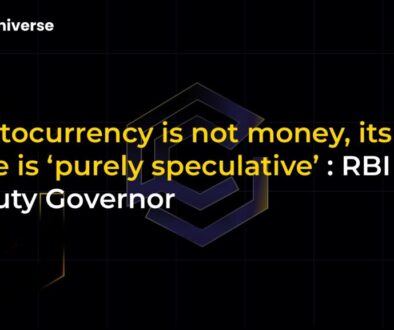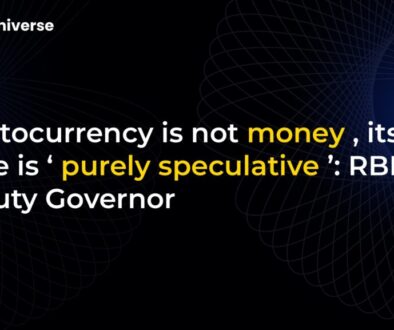Brazil’s Shock Pivot: Why the Drex CBDC Project is Ditching Blockchain

A Major U-Turn for Brazil’s Digital Currency Ambitions
In a move that has sent ripples through the global fintech community, Brazil’s Central Bank has announced it is abandoning the blockchain component of Drex, its ambitious central bank digital currency (CBDC) project. The decision, revealed at the Blockchain Rio conference, marks a significant and surprising course correction for a project once hailed as the future of Brazil’s tokenized economy.
Initially envisioned as a sophisticated system built on Hyperledger Besu, the project aimed to revolutionize the country’s financial landscape. However, persistent technical challenges and a shift in leadership have forced a dramatic rethink. Let’s dive into why Brazil is pivoting, what the original dream was, and what this means for the future of state-backed digital currencies.
The Grand Vision: A Tokenized Brazil on the Blockchain
When development on Drex (originally the Digital Real) began in 2021, the goals were monumental. The project was designed as a two-tiered system to merge wholesale and retail CBDC concepts into a single, powerful platform.
- Wholesale Layer: A permissioned network controlled by the Central Bank, where regulated financial institutions could transact and settle payments.
- Retail Layer: Tokenized bank deposits issued by these institutions to the public, allowing everyday citizens to interact with the new digital economy.
The ultimate goal was to create an environment ripe for innovation, enabling new financial products and services through smart contracts and tokenized assets. By building on the Ethereum Virtual Machine (EVM) compatible Hyperledger Besu, the door was open for decentralized finance (DeFi) protocols to operate within a regulated sandbox. Combined with Brazil’s successful instant payment system, Pix, Drex was poised to become a financial “super app.”
The Drex Trilemma: Where the Blockchain Dream Broke Down
The project’s ambition soon collided with a classic blockchain challenge, dubbed the “Drex Trilemma”: simultaneously solving for privacy, scalability, and programmability in a permissioned environment. The core issue was a fundamental conflict. How could the system guarantee user privacy to comply with Brazil’s strict data protection laws while also giving the Central Bank complete supervisory visibility, all without compromising the seamless interaction of smart contracts (composability)?
Testing and Tribulations
The pilot program, launched in March 2023, brought together Brazil’s largest financial institutions—like Itau, Santander, and BTG Pactual—and tech giants like Microsoft and AWS. They tested several advanced privacy solutions, including:
- Rayls by Parfin
- Anonymous Zether by JPMorgan and Consensys
- Starlight by EY
While these technologies showed promise, Drex coordinator Fabio Araujo confirmed they were ultimately deemed too costly, slow, and not robust enough for a nationwide production environment. The first phase of the pilot concluded with a stark admission: the project needed a “major adaptation” to succeed.
More Than Just a Tech Problem
The decision to ditch blockchain wasn’t made in a vacuum. Several other factors contributed to the pivot:
- Change in Leadership: The project’s original champion, Roberto Campos Neto, was replaced as the bank’s president by Gabriel Galípolo. The new leadership has actively repositioned Drex as a technology-agnostic infrastructure project, not a blockchain-first initiative.
- Public and Political Fears: The concept of Drex has been met with significant public skepticism. Concerns over government surveillance, the ability for a central authority to freeze funds or reduce balances, and the potential elimination of physical cash have fueled a strong backlash. Tweets and political movements have labeled Drex a tool for social control.
- Global Precedent: The United States has so far opted against creating its own CBDC network, instead encouraging the private sector to innovate. This example may have influenced Brazil’s decision to take a less prescriptive technological approach.
The New Drex: Back to Basics
With blockchain on the back burner, the
In his keynote at Blockchain Rio, President Galípolo emphasized that Drex is designed to complement the existing financial system, not replace it. The primary objective now is to unlock and facilitate the flow of credit in Brazil’s notoriously high-cost lending market. A public product is tentatively scheduled for mid-2026.
Industry Fallout: Surprise, Scorn, and Silver Linings
The reaction from the crypto and banking industry has been decidedly mixed.
Some, like the executive director of the Brazilian Association of Tokens (ABToken), expressed “concern and surprise,” hoping for a reconsideration. Others were less charitable, with one executive accusing the Central Bank of sending the entire banking industry on a “wild goose chase” by naively underestimating blockchain’s most difficult challenges.
The crypto community largely saw the move as an admission that CBDCs are fundamentally about centralization and control, not the decentralized ethos of blockchain. As one viral tweet put it, “Adeus blockchain, olá censura.” (Goodbye blockchain, hello censorship.)
However, there may be a silver lining. The Drex experiment forced Brazil’s conservative banking sector to deeply engage with blockchain technology. This forced education could spur private-sector innovation for years to come, even if the central project itself has changed course.
What’s Next for CBDCs?
Brazil’s pivot raises critical questions about the viability of using blockchain for state-run financial infrastructure. While the technology promises transparency and efficiency, the challenges of privacy and scalability have proven to be a major roadblock for one of the world’s most ambitious CBDC projects. As nations continue to explore digital currencies, the Drex saga will serve as a powerful case study—a cautionary tale about the gap between technological ideals and practical reality.


